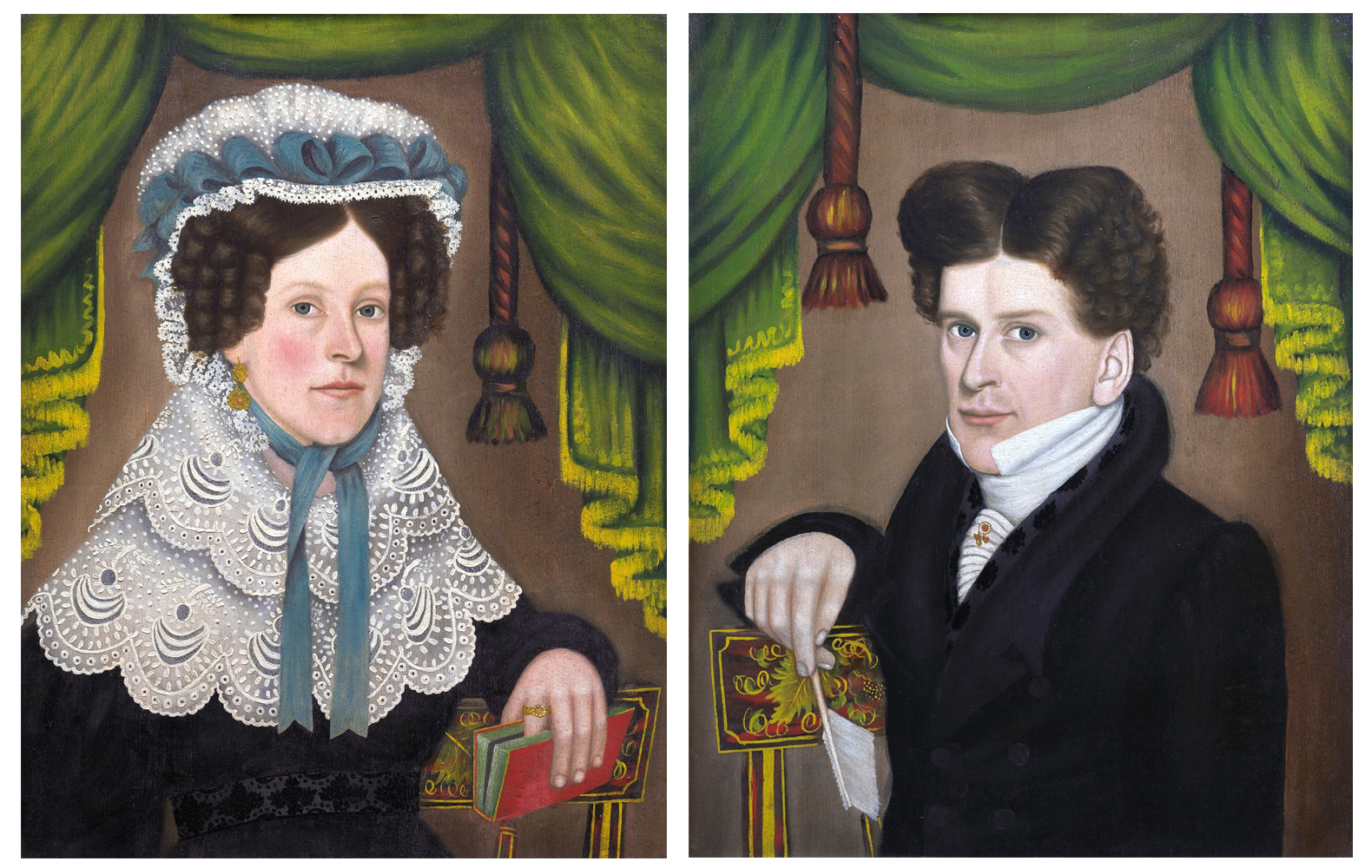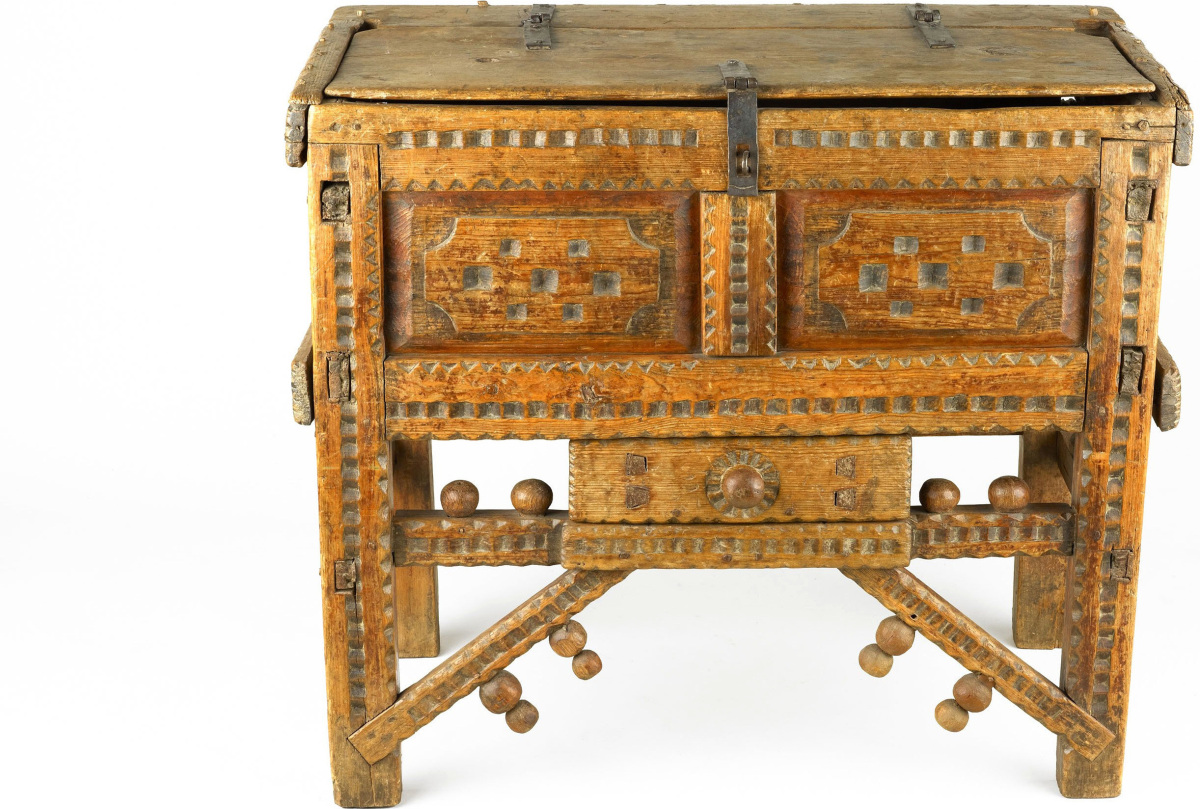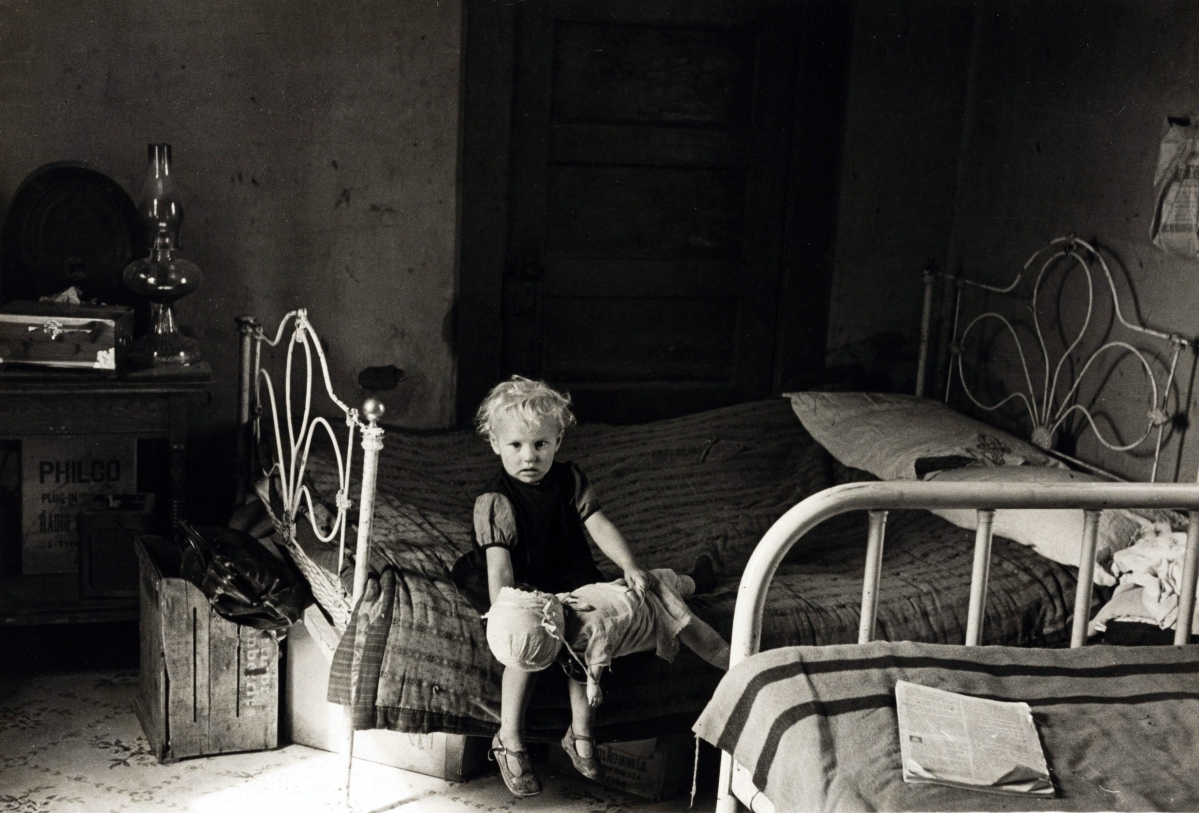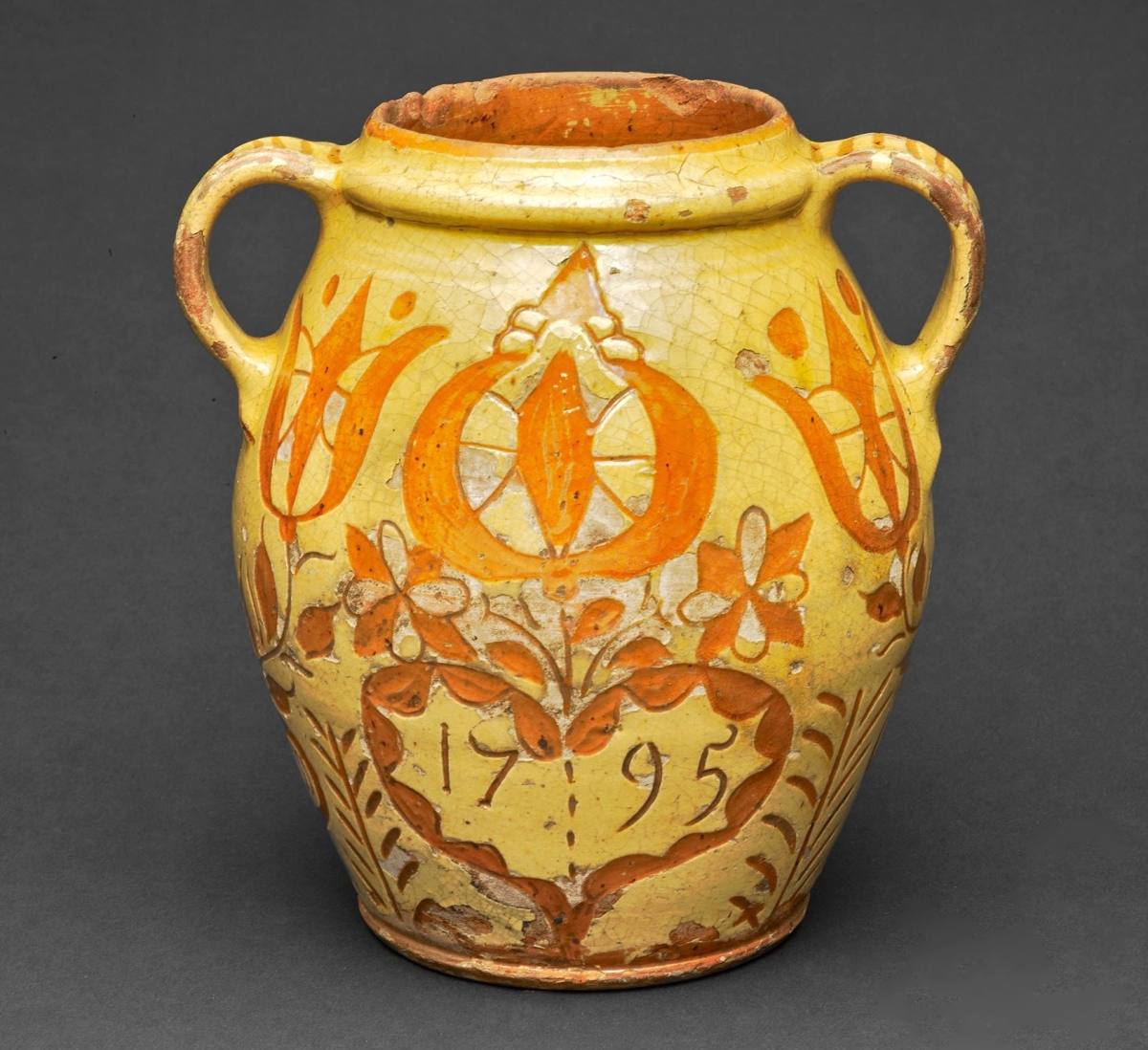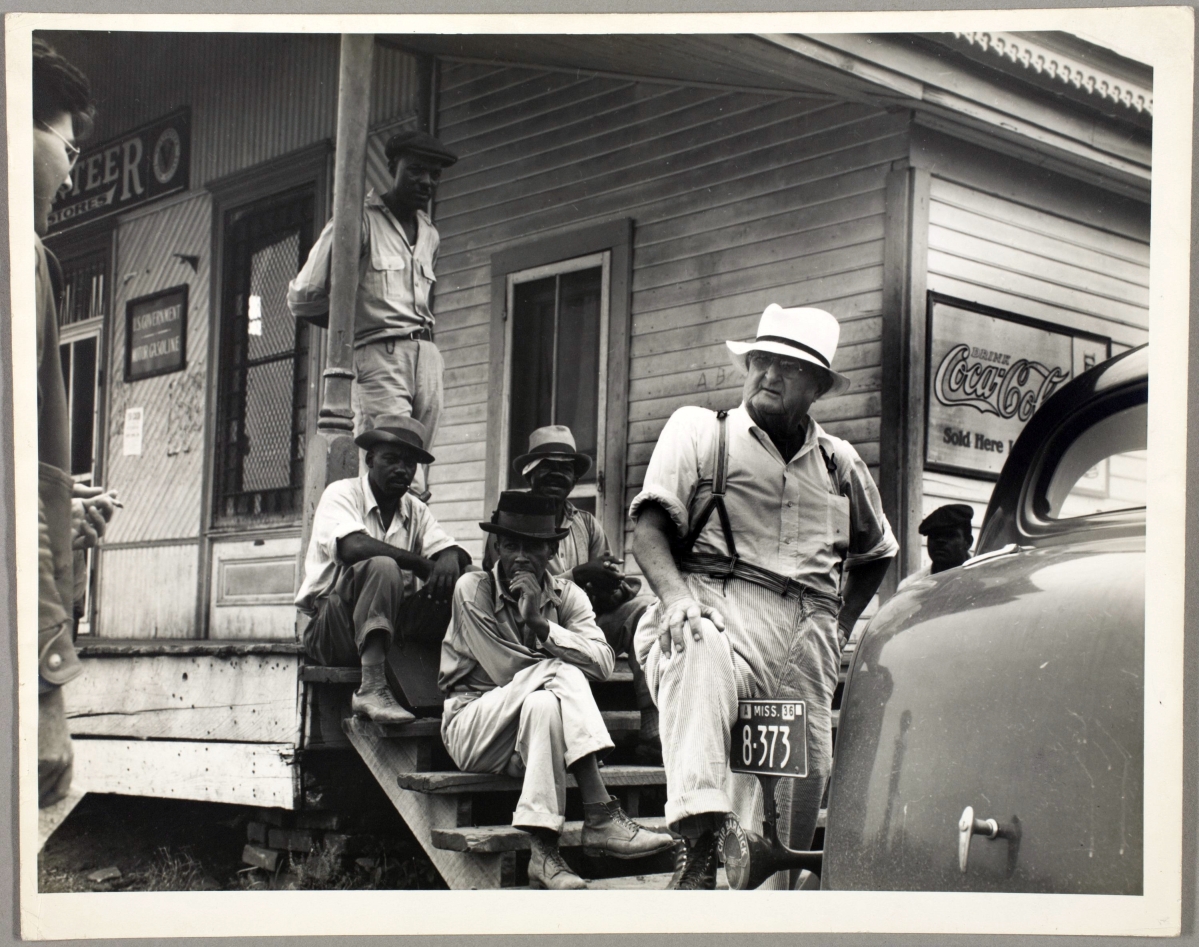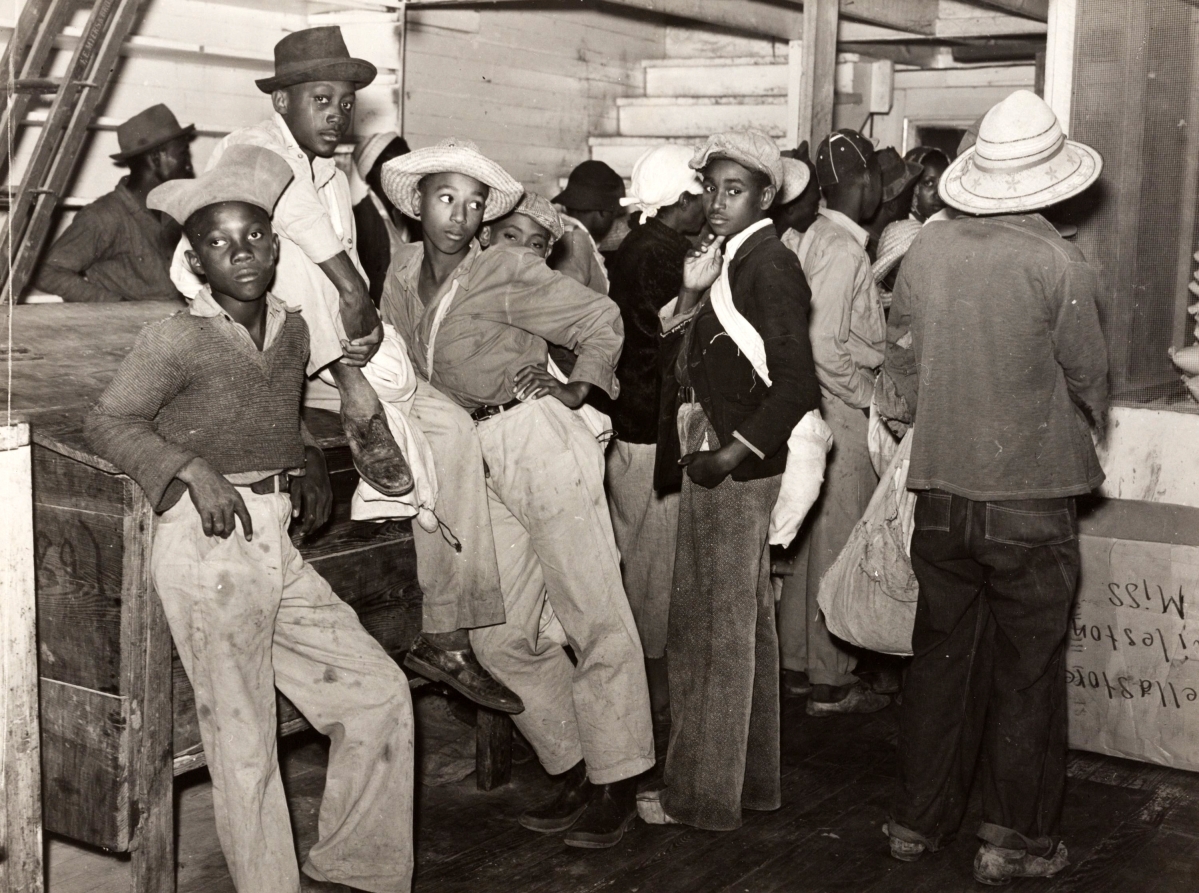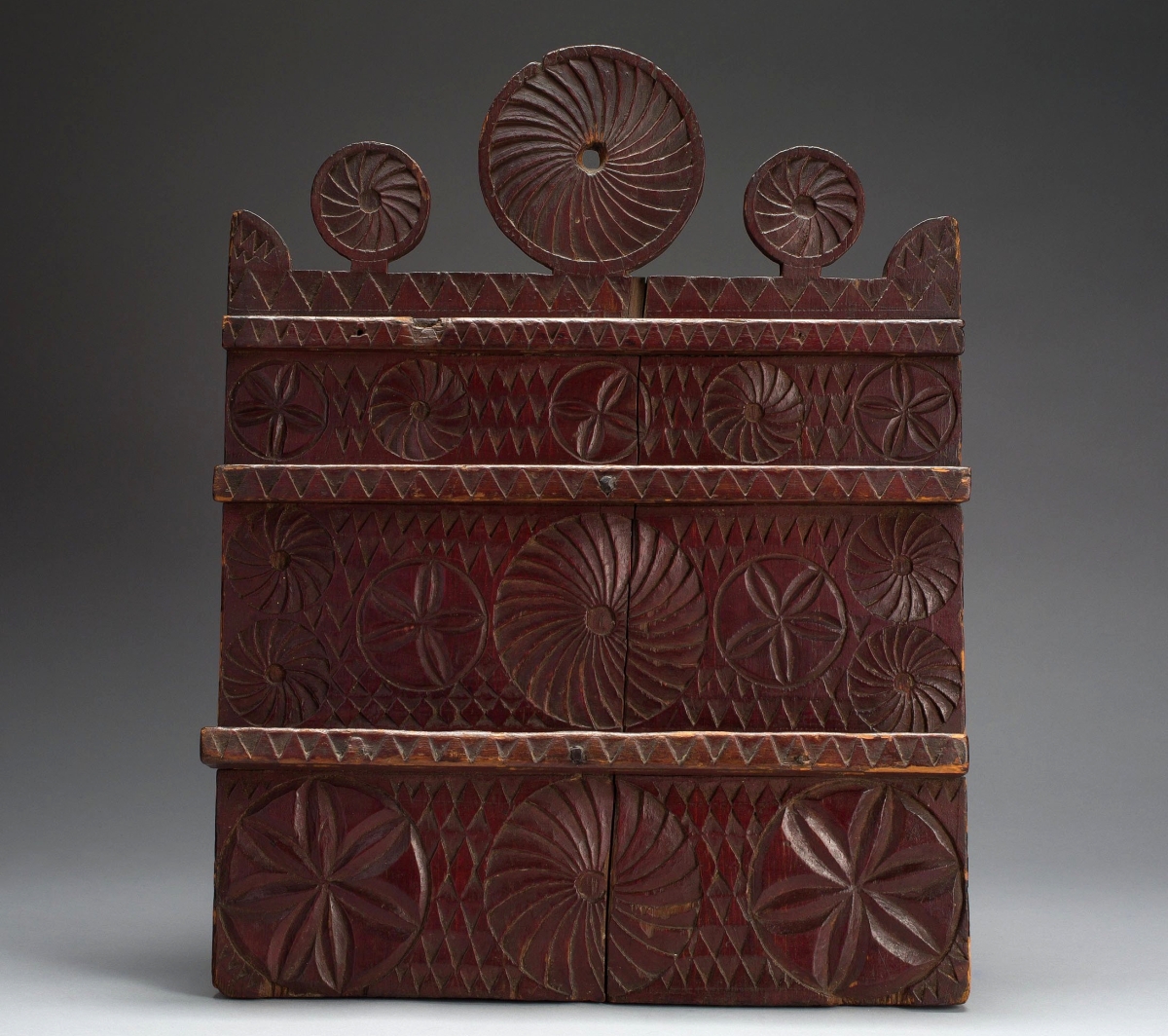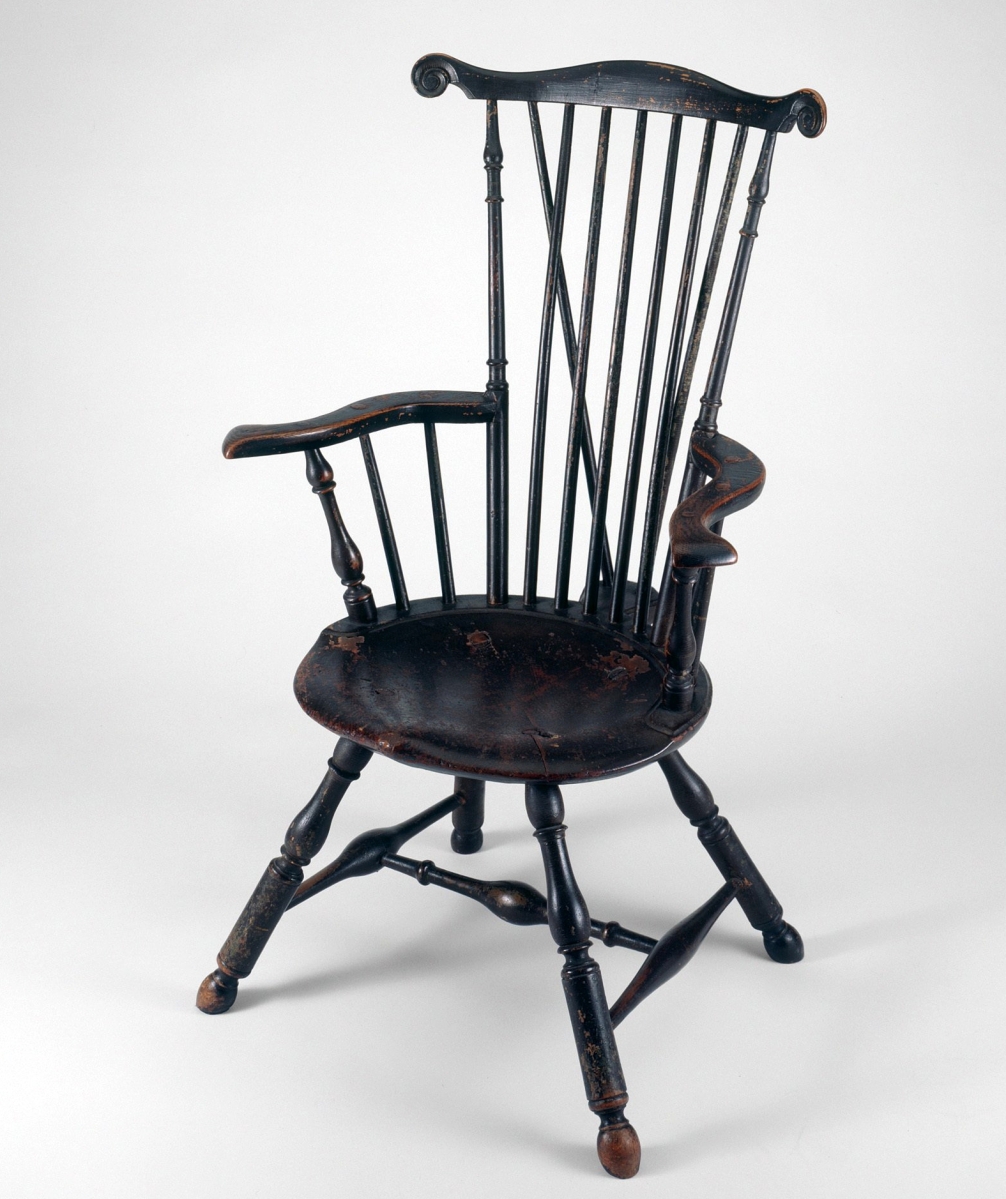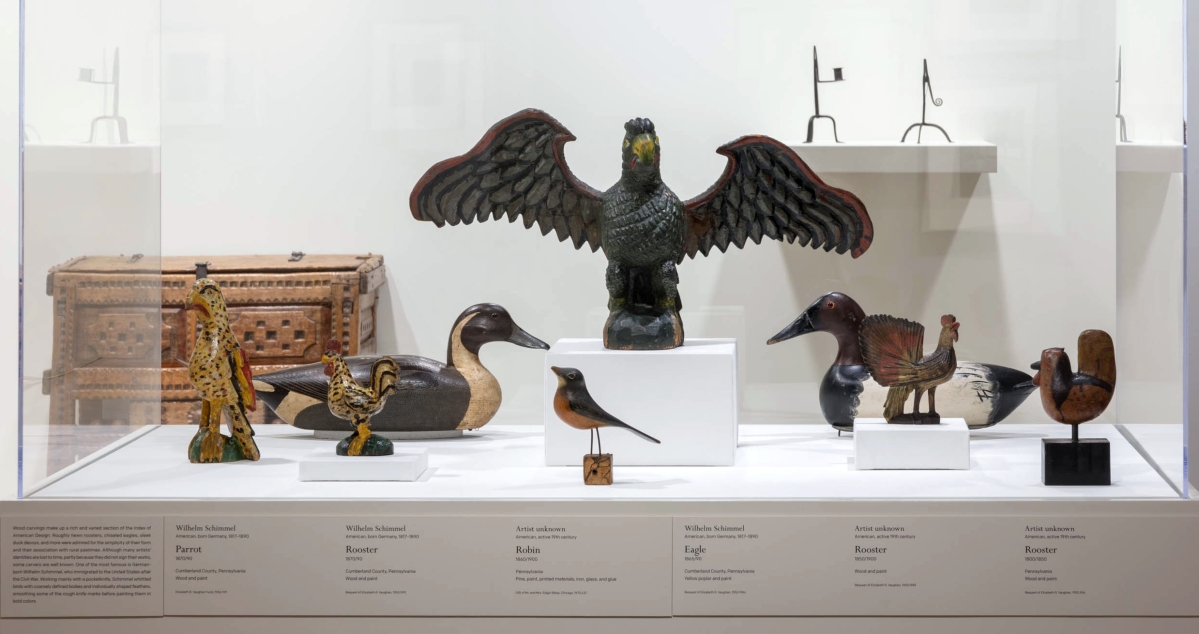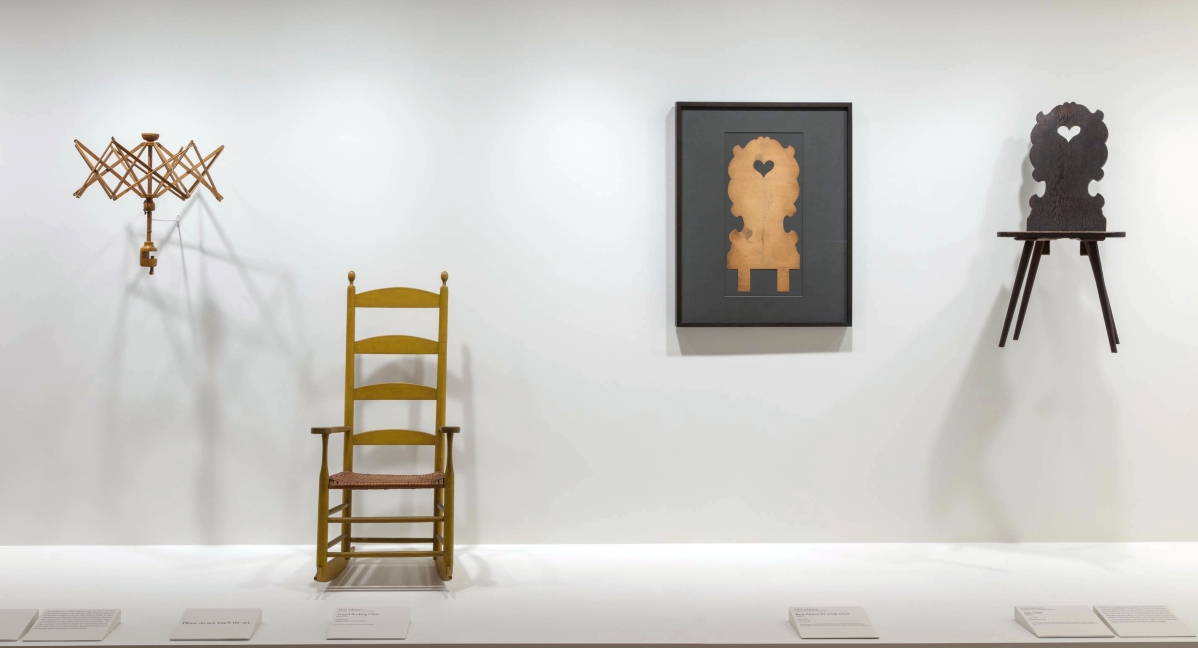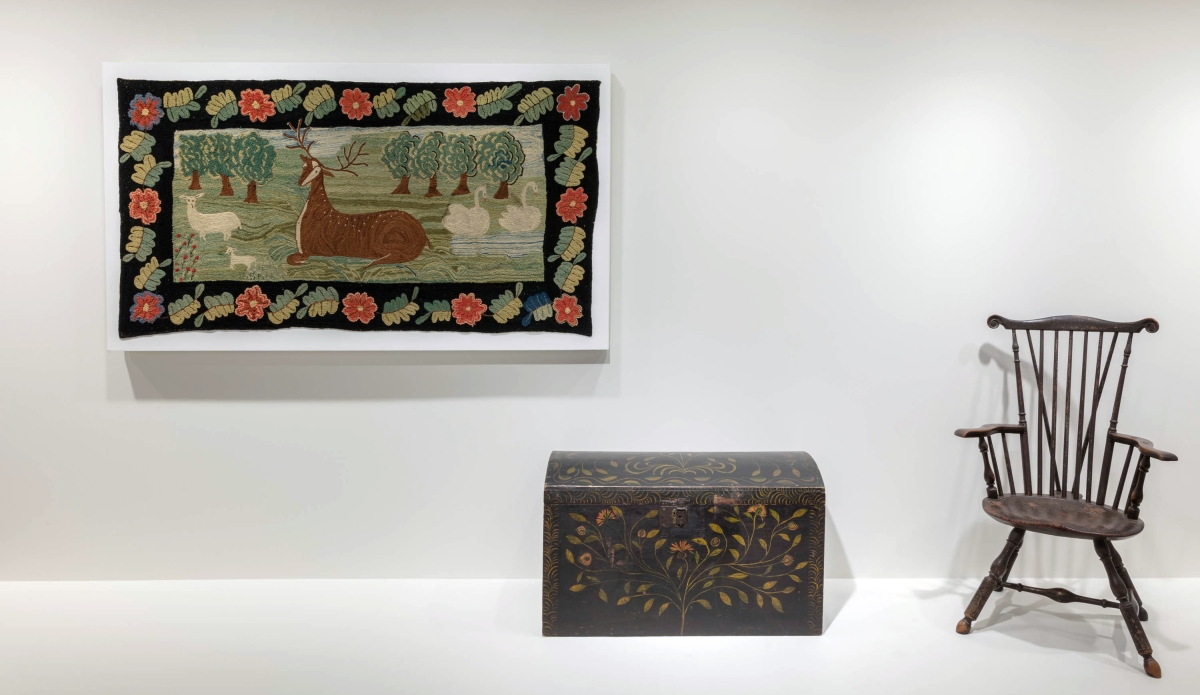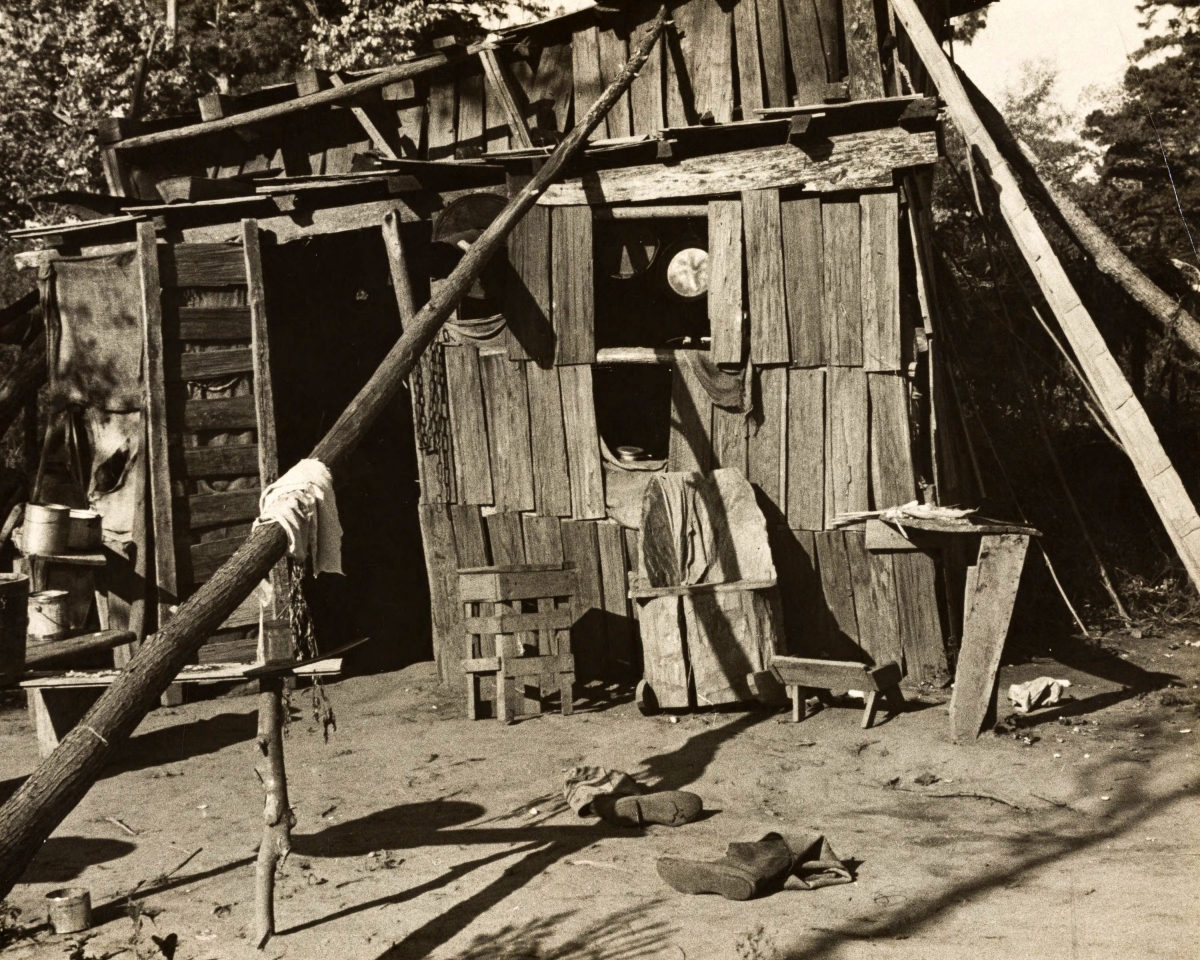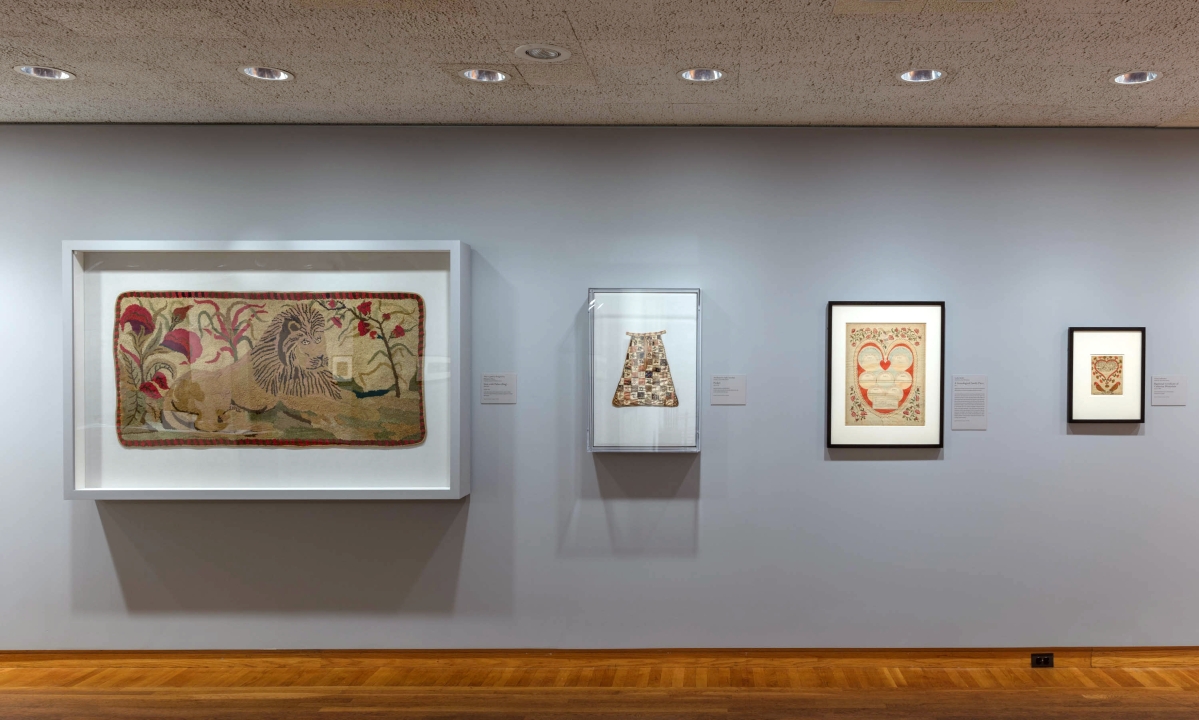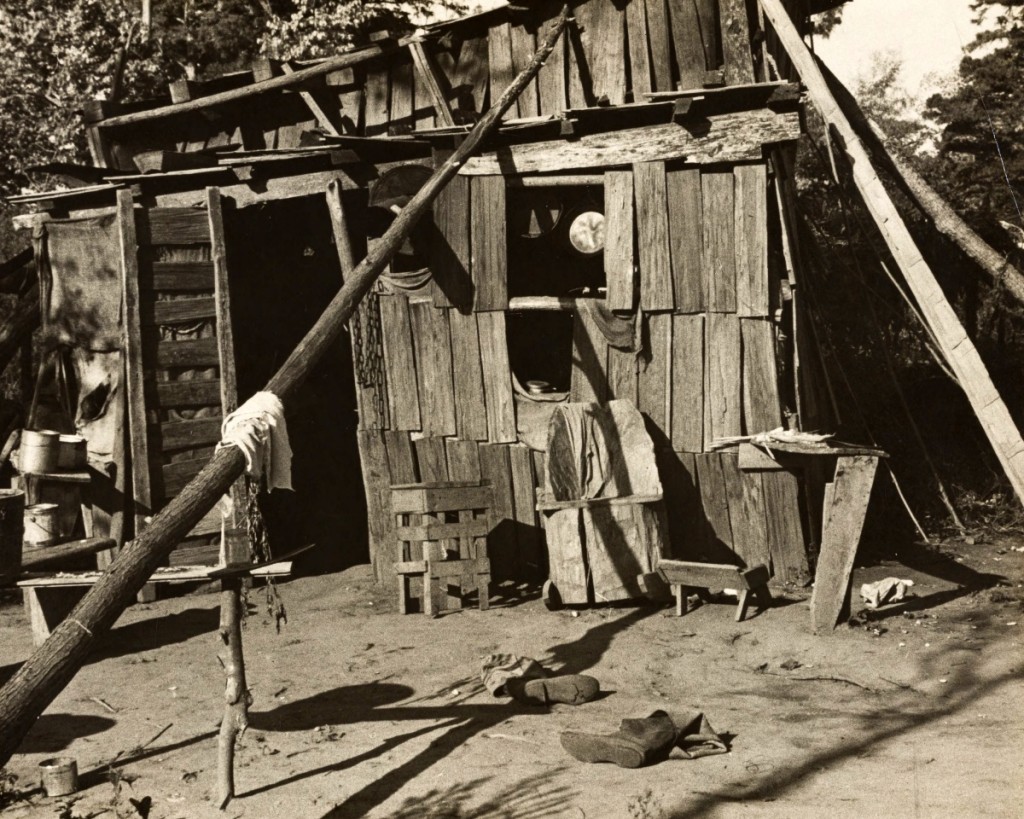
“Arkansas Squatter’s Home” by Ben Shahn, 1937. The Art Institute of Chicago, through prior gift of Charles Levin.
By Karla Klein Albertson
CHICAGO – On view through January 19 at the Art Institute of Chicago, “Photography + Folk Art: Looking for America” brings together more than 130 images and artifacts drawn primarily from the institution’s permanent collection. The two distinct bodies of material are united by a time period in the 1930s, when there was a new interest in recording what can be defined as distinctly American.
Crucial to the theme are two projects, launched during the Depression as part of President Roosevelt’s New Deal, which sought to capture America’s true spirit. On the one hand, there was a focus on images of ordinary people surviving during a difficult period in history – in other words “just folks,” which might even be my folks or your folks. The Farm Security Administration (FSA) employed well-known photographers to take pictures as they traveled the backroads where people lived and worked on the land. Students of the history of photography will recognize major works by Dorothea Lange (1896-1965), Ben Shahn (1898-1969), Russell Lee (1903-1986) and Marion Post Wolcott (1920-1990).
The other pillar of the exhibition is a distinguished collection of American folk art, a different use of the term that always raises the question, who and what do we mean by the type of art produced by those creative folks? While the photographers were on the road, hundreds of artists involved in a Federal Art Project work-relief program between 1935 and 1942 were executing more than 18,000 watercolor renderings of folk and decorative arts made in various regions of the country between the Colonial Period and 1900. These were gathered into the “Index of American Design,” which is housed at the National Gallery of Art. The “Index” and the exhibitions which followed not only helped define categories of folk art – wood carvings, textiles, metalwork – but encouraged the growth of passionate collectors, both private and institutional.
An art show with two distinct inputs requires the involvement of experts approaching the project from separate specialist branches and combining favorite objects into a single story in the galleries. In the case of this exhibition, the co-organizers were Elizabeth Siegel, curator of photography, and Elizabeth McGoey, Ann S. and Samuel M. Mencoff associate curator of American decorative arts.
They issued an initial joint statement of purpose, which sets out what they hoped to accomplish. Siegel noted, “The idea for the exhibition sprang from our realization that documentary photography and folk art share remarkably parallel trajectories in the 1930s. Although they are seemingly disparate artistic areas, both represent attempts to define American visual identity.” To which, McGoey added, “Suddenly the artistic canon expands as people find beauty and relevance in works of art that speak to experiences of everyday life in America.”
 Antiques and The Arts Weekly posed some additional questions about the organization and structure of the show, and they both responded. First of all, what first inspired the project in the first place? To which Siegel replied: “This exhibition is part of a series called “Photography +” in which we examine photography against other disciplines (books, contemporary art and now folk art). It’s been a wonderful laboratory for productive collaborations and has illuminated photographs in unexpected ways. We had a hunch that looking at photography and folk art together would be fruitful to an understanding of American visual identity, but it wasn’t until we really dug in that we realized there were so many overlapping themes. We spent about a year doing research and reviewing objects for inclusion in the exhibition.”
Antiques and The Arts Weekly posed some additional questions about the organization and structure of the show, and they both responded. First of all, what first inspired the project in the first place? To which Siegel replied: “This exhibition is part of a series called “Photography +” in which we examine photography against other disciplines (books, contemporary art and now folk art). It’s been a wonderful laboratory for productive collaborations and has illuminated photographs in unexpected ways. We had a hunch that looking at photography and folk art together would be fruitful to an understanding of American visual identity, but it wasn’t until we really dug in that we realized there were so many overlapping themes. We spent about a year doing research and reviewing objects for inclusion in the exhibition.”
Elizabeth McGoey explained how they worked in concert on selecting exhibits: “We spent a lot of time in storage together, looking at groups of objects and photographs. Working directly with each other’s collections was mutually illuminating, and those sessions instilled a shared vision that each section of the exhibition should feature both objects and photographs, rather than moving through separate galleries dedicated to one or the other. The groupings between the fields are historically and thematically motivated, and yet the visual ties between them – the emphasis on humble materials, worn and unvarnished surfaces and elevation of the everyday – is apparent when seen side by side.”
Visitors to the galleries will first observe that the folk objects are generally colorful and cheery, in contrast to the black and white photography. There is a two-handled jar with bright yellow glaze and the sgrafitto date “1795” and a pair of portraits by Jonas Welch Holman (1805-1873) framed by grass green curtains. Hooked rugs, samplers and painted furniture forms all bring color to the displays. Furthermore, the curators have chosen to put a broad range of “folkiness” into the show – contrast John Haley Bellamy’s classic eagle over American shield and flags with the exuberant bird carved by Wilhelm Schimmel. Or the primitive cut-out iron peacock weathervane with the gilded running horse, circa 1860, made by A.L. Jewell and Company.
While the objects remain up-tempo examples of ordinary folk taking pleasure in making what they used, many of the photographs are simply heart-rending. There are some urban scenes – for example, Dorothea Lange’s images of a breadline and a policeman on the street during a general strike. But many focus on the terrible conditions of rural life during a time when farms were under extreme stress and how that directly affected people living there, such as Lange’s picture of an exhausted “Woman of the High Plains, Texas Panhandle, 1938.”
Collectors, particularly those familiar with textiles, will instantly recognize one of the key images, “Girl at Gee’s Bend, Alabama [Artelia Bendolph] April 1937” by Arthur Rothstein (1915-1985). The photograph appeared in the chapter “On the Map” in the 2002 catalog The Quilts of Gee’s Bend – a documentary publication, funded by Jane Fonda, which accompanied the traveling exhibition organized by the Museum of Fine Arts, Houston. The caption in the book explains that the young girl is looking out the window of her grandfather Patrick’s house on the old Pettway plantation land and quotes her memories of daily life there. That Gee’s Bend photo turned out to be a favorite for both curators, with McGoey commenting “…it’s a powerful image that speaks to the dignity of the people whose lives were documented through the FSA.”
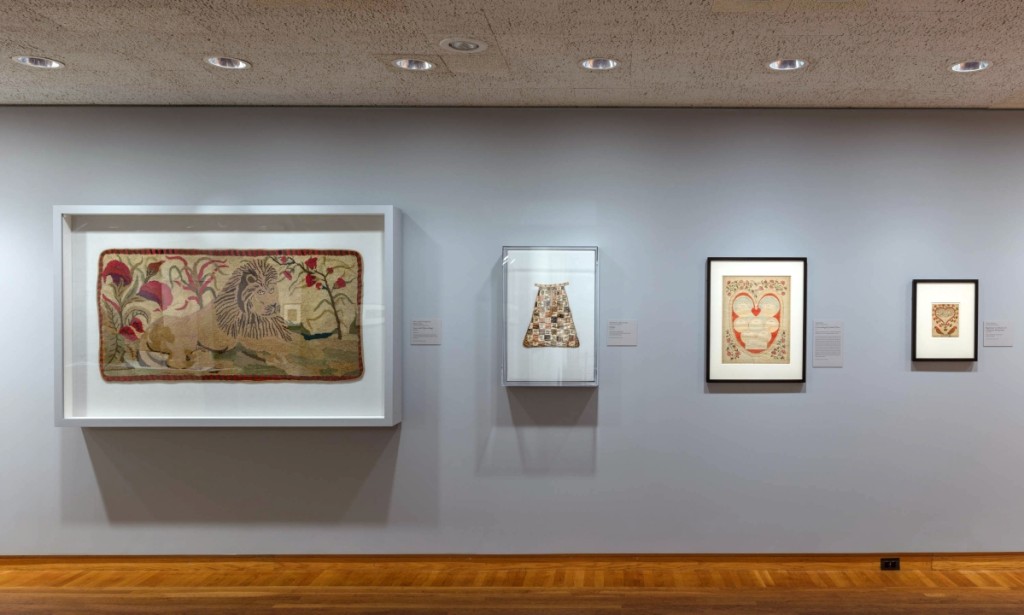
On the wall at left, a hooked rug depicting a recumbent lion after a design by Ebenezer Ross, active 1890-1900. At center right, an 1811 genealogical drawing in ink and watercolor by Lydia Smith.
A major part of organizing any show of this type is defining its central goals, in other words what do the planners hope visitors will take away from “Photography + Folk Art?”
Elizabeth Siegel said, “We hope that visitors will see the connections between this key moment in American history and today, in terms of the questions that are still being asked, such as how, and how much, should government support the arts? What kinds of art belong in museums, and how does a canon of art expand?” Elizabeth McGoey added, “Yes, we are looking back at a moment in time 90 years in the past – we just marked the anniversary of the stock market crash on October 29. Yet these themes still resonate with us in the present day. How do we find models for American visual identity, and who decides what that looks like?”
For more information about exhibitions and collections at the Art Institute of Chicago on South Michigan Avenue, a short walk from Lake Michigan, go to www.artic.edu.

